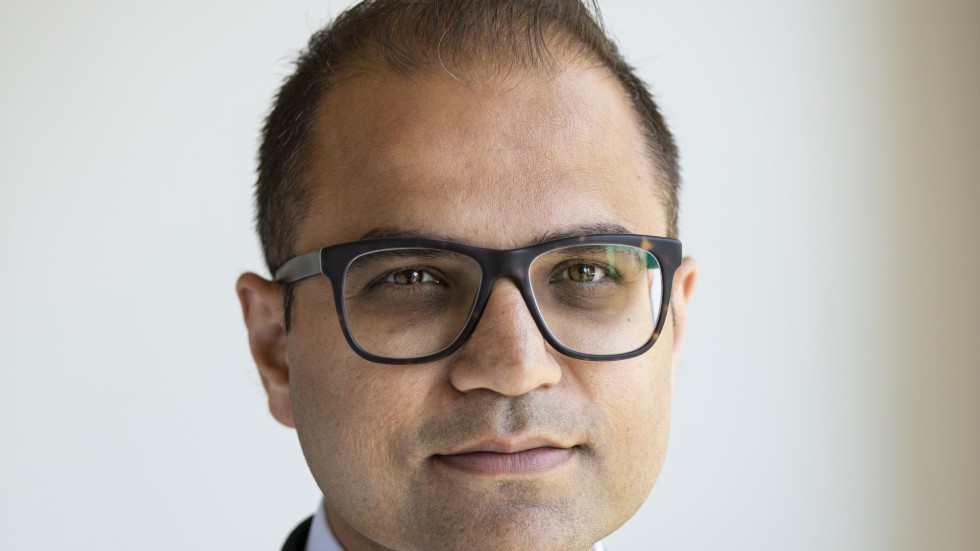Behavioral health needs ebb and flow over the course of a person’s life. Some people need significant levels of support over the long term. Others dip in and out of the behavioral healthcare system as needed. However, most healthcare systems are not designed to adapt to people’s changing needs in a flexible way.
Sheppard Pratt is the exception. For many decades, Sheppard Pratt leadership has invested in a suite of services to meet people where, when, and how they need care. “Some people need episodic care, while others have lifelong behavioral health needs. What an individual needs as part of their recovery varies over time,” says Jeff Richardson, LCSW-C, MBA, vice president and chief operating officer for Sheppard Pratt's community-based programs. “We have developed a continuum of care that can respond to people based on their level of need.”
That continuum contains the basics, such as inpatient and outpatient services. Yet that’s only a piece of a much bigger picture, adds Deepak Prabhakar, MD, MPH, chief of medical staff. “Being the nation’s largest private, nonprofit system for mental healthcare gives us the leverage to be more present in the communities we serve—not just for behavioral health treatments but also for things like preventative care and rehabilitation services,” he says.
By providing a wide array of services and supports under one coordinated umbrella, Sheppard Pratt is improving health and wellbeing for people in Maryland and beyond.
A constellation of treatment services
Mental healthcare has evolved significantly over the last century, from a time when people with mental health issues were removed from society and placed into institutions. The deinstitutionalization movement has made it much more likely that people’s behavioral health needs are met outside of hospital settings. While that movement has improved the quality of care and the quality of life for patients, it has also resulted in gaps in coverage—and many mental health needs going unmet.
Sheppard Pratt’s approach to the continuum of care is designed to broadly meet the needs of a variety of patients. This includes people with chronic mental health disorders, severe mental illness, substance use disorders, those with developmental or intellectual disabilities who may have unique behavioral health and education needs, and others.
In severe cases, hospitalization and hospital-based programs may still be the best option for a patient in crisis. Sheppard Pratt’s two freestanding psychiatric hospitals provide access to hundreds of inpatient beds, day hospital programs, and Psychiatric Urgent Care clinics which are available to help stabilize patients in acute situations. “Along with the inpatient facilities we offer, we also provide stepped-down care,” Richardson says. That includes residential crisis programs for people transitioning from inpatient to outpatient care, long-term residential care, and structured day programs that offer full-day services for patients who need more intensive treatment but are able to return home on evenings and weekends.
Rounding out those services are a variety of outpatient programs, offered through telehealth and at clinics across the state. Those programs provide services such as outpatient therapy, medication management, substance use treatment, and neuromodulation. Through this extensive constellation of inpatient, residential, and outpatient services, Sheppard Pratt reaches patients across the state.
For many patients, treatment starts at those hospitals or clinics. But it doesn’t stop there. “We've tried to build out very different sets of care continuums to match the diagnostic and recovery needs of each individual,” Richardson says.
A bridge to recovery
Treatment for psychiatric and behavioral health disorders is an important cornerstone of care. But there are other important components. “One of the notable things that Sheppard Pratt does is to help people bridge treatment with the other things that will help them maintain their recovery—things like permanent housing, employment, and medical care coordination,” Richardson says.
Those offerings include psychiatric rehabilitation programs that connect people to skills and employment training and job opportunities. In fact, through the health system’s Business Services division, it employs more than 400 people via contracts with the state of Maryland and other large employers. Sheppard Pratt also offers long-term, permanent affordable housing to more than a thousand people. “There are so many things that help people maintain their own recovery. High on that list are access to employment and a safe, affordable place to live,” Richardson says. “By providing these wraparound supports, we find our patients can be much more engaged in their treatment and recovery.”
He and his colleagues also keep prevention in mind, often starting with youth at risk of mental and behavioral health disorders. Sheppard Pratt provides school-based counseling to children in more than 200 Maryland schools. “By providing these services to children in school, our goal is to prevent them from needing more intensive services down the road,” Richardson adds.
One of the notable things that Sheppard Pratt does is to help people bridge treatment with the other things that will help them maintain their recovery—things like permanent housing, employment, and medical care coordination.
Coordinated care for holistic health
One of the biggest problems in behavioral healthcare today is lack of access. Across the U.S., the need for psychiatric and behavioral health support far outstrips the availability of services. One way Sheppard Pratt is attacking that problem is by partnering with primary care clinics to create a collaborative approach to behavioral health.
“In primary care, depression and anxiety are among the most common presenting problems. Collaborative care is a model in which we have behavioral healthcare specialists embedded in primary care clinics,” Prabhakar says. People with mental health needs can get evaluations and treatment at their physician’s office. People with more involved needs may be stepped up to behavioral health treatment centers for services. But most have their care managed right in the primary care clinic.
In another effort to better integrate mental and physical healthcare, Sheppard Pratt has developed a community program known as behavioral health home services. Through this program, nurse care managers help people with long-term behavioral health needs coordinate care to ensure all of their medical needs are met, including preventive care. “Often, these are patients who have not been as successfully engaged by their primary care providers because of their behavioral health needs,” Richardson says. “By treating all of those things together, we can improve a patient’s overall health and access to preventive care. We have also been able to reduce emergency department and inpatient visits because we’re able to intervene early.”
Such coordinated efforts result in more timely behavioral healthcare, Prabhakar says. “If you address behavioral health needs only through specialty health clinics, those clinics will easily become overwhelmed. But when you put together all of these pieces for collaborative care and prevention in community settings, you can better manage emerging problems before they escalate. This allows us to better meet the demand,” he adds.
Finding innovative ways to reach patients and improve outcomes isn’t always straightforward, however. “Not all of these efforts are directly reimbursable,” Prabhakar says. To make it work, Sheppard Pratt relies on other funding mechanisms, such as state and local grants, to fill in the gaps. The organization is also actively involved in advocating for new reimbursement models and works with insurers and other stakeholders to help them understand just what goes into providing a comprehensive continuum of care to patients. “When it comes to advocacy, it’s a 365-days-a-year effort for us,” he says.
When you put together all of these pieces for collaborative care and prevention in community settings, you can better manage emerging problems before they escalate. This allows us to better meet the demand.
Advancing the field of behavioral health
Sheppard Pratt also draws on their long history and deep expertise to help improve care for people beyond the state of Maryland. “We want to share our passion with other folks across the U.S. to advance the field as a whole,” Richardson says.
The Sheppard Pratt Solutions program offers consulting services to other behavioral health organizations, regionally and nationally. “We provide a range of customized services and management supports to help organizations apply these principles depending on their needs, whether that’s building inpatient facilities, developing an outpatient strategy, or designing their own approach to a continuum of care,” Richardson says.
The name of that consulting program is apt, Prabhakar adds. “At Sheppard Pratt, we find solutions—even when people have been told elsewhere that there are no services available to help them,” he says. “Our institution has a long history of looking for solutions, and in behavioral healthcare, that is unique.”

